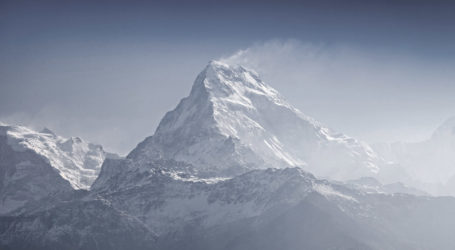It’s like stepping into a Bounty ad
The Seychellois love to make jibes at Mauritius. Their main competitor for beach-based tourism in the Indian Ocean is ribbed mercilessly, often with faint praise. ‘Mauritius has wonderful beaches, great hotels – and that’s it,’ said one tourism official. ‘People go to the luxury hotels, not to Mauritius itself,’ said another. ‘But they come to the Seychelles because they want the Seychelles.’
Maybe. But I have to admit that I had few notions about the Seychelles before I arrived in the hot-house archipelago, 1,000 miles off the coast of East Africa in the Indian Ocean. There were those marvellous postage stamps depicting tropical birds and lizards, pride of many a Sixties schoolboy; scuba diving, honeymoon couples walking on endless beaches – and that’s it. Frankly, I thought it might be boring.
Well, it won’t challenge Ibiza for a wild time, but I could have stayed there for months, for natural attractions and soft adventure, as well as all that Bounty bar paradise stuff.
The direct flight of 10 hours takes you over anxious places such as Yemen and Somalia, then you’re in this blue-skied place where the only thing to fear is fear itself (and the odd tiger shark). That chilled-out, swaying palm and turquoise water stuff is all true. Over the course of a week, I often felt that I was starring in a brochure, and letting it down badly in my M&S trunks.
It’s relaxed. Service is languid. Hair-dryer winds coerce you into walking a Mogadon shuffle, while the Indian-made Tata buses climb the hills at walking pace. My first hazy lunch was a two-hour affair at a beach bar/restaurant called Batista, where I had a whole snapper with rice and salad (the water’s good here, so you don’t have to refuse ice and fruit). Boring? Well, if you actually need stress, perhaps it is.
The Seychelles is just south of the equator. It isn’t excessively hot, veering between 22 and 32C, but it’s humid and tropical. I sweated buckets as I hiked up the hills behind the capital in the main island of Mahé, a walk that revealed wild pineapples, cinnamon trees, the insect-eating pitcher plant and dragon-blood trees that ‘bleed’ red sap when carved.
The king of the Seychelles jungle – and the symbol of its tourism industry – is the coco de mer , which offers up ‘the biggest seed in the world’, as the Seychellois never tire of telling you. Up to a foot across, it looks like a big human bum, complete with saucy tuft of hair in its cleft. The place to find coco de mer palms is in the Vallée de Mai on the second island of Praslin; the only such forest in the world. It’s like being in Kew Gardens’ Palm House, only in the open air. Want to take one of the seeds home? That’ll be £300-£400, and you’ll have to get an export stamp on it to get it out of the country. Michael Jeanlouis of local agency Travel Services Seychelles justified it thus: ‘There are only about 10,000 in the world. It’s like having a classic car.’
All planes land in Mahé, the biggest Seychelle, with its capital, Victoria, at 25,000 inhabitants, little more than a big village. Flora drip onto the roads behind Victoria, which wind up to high wooded peaks via the occasional shrine to Mary – the Seychelles started life as a French colony and is mostly Catholic. It then became British, hence ‘Victoria’, but there remains a French ambience and the Creole is like a phonetic Franglais: the greeting is a raspy Bonzour , and the newspapers have Creole notices demanding your atensyon .
At the botanical gardens on Mahé, flowers as big as my hand crashed to the ground, while fruit bats flew overhead. There’s a gardenia planted by George Harrison on 12 December 2000 – in the 1970s he became co-owner with Peter Sellers of Anse Intendance beach, where the new Banyan Tree resort is now situated. Back on the streets of Victoria there’s little to do and buy, although you can hang out in the big Pirate’s Arms pub and lose dough in the casino.
Assuming that, like me, you don’t want to sit on a hot beach for long, then the thing to do is a bit of island-hopping. I flew a Twin Otter from Mahé airport to the second island, Praslin, to stay in the Acajou hotel on the fabled Cote d’Or beach on its northern side. There’s a bit of bar life here, with local Rastamen drinking Guinness, and a funkier, less yachty vibe than Mahé. And, of course, yet more bendy palms and white strands; and also more of the great boulders of granite that give most of the islands the eerie feeling that a pterodactyl might creak its way overhead.
I took a boat to the island of Cousin (very close to the island of Cousine, where you can stay at a price), a nature reserve inhabited by a handful of custodians. Now, I normally excuse myself at the phrase ‘nature reserve’ but this was remarkable, partly because the birdlife is unfazed by humans and stays put as if nailed to the branch – perfect for a St Francis of Assisi fantasy and utterly absorbing to the youngsters on the tour (the Seychelles is very child-friendly).
Gianni, the charming youth who showed our party round, pointed out such species as the magpie robin, of which only a handful exist. ‘That bird’s much more expensive to upkeep than me,’ said Gianni, as turtles gambolled in the surf behind him.
Some of these animals are edible, particularly the aquatic ones. I was impressed with the Seychelles food (although like everything else here, it isn’t cheap). There’s both a Creole and an Indian influence: many dishes come with rice, dhal and hot tomato sauce. A guide, Champsy, told me that even the fruit bats were eaten – a tragic end for a peaceable fruitarian. ‘They’re caught in nets and curried,’ he said. ‘A lot of people don’t like the idea, because they have almost human faces. The male has a chest and the female has breasts.’ No fruit bat tikka masala for me, then.
I did have a memorable crab curry, however, at the Bonbon Plume restaurant overlooking the peerless Anse Lazio beach in Praslin. And later, at Laurien’s guest house nearby, the enchanting chef-proprietor Edwin grilled the fish au point. The wine is horrendously expensive, though, so I relied on the entirely acceptable local Seybrew beer, diversifying every so often with a Guinness.
The Seychelles gained independence from Britain in 1976. It’s now a welfare state, with little poverty, high employment on the 26 inhabited Seychelles and stringent laws on things such as hawking shells on the beach – which all adds up to a hassle-free holiday. ‘In Mauritius,’ claimed a Seychellois, ‘you are harassed all the time’. In the 1970s and 1980s the socialist government didn’t want all that foreign Costa timeshare stuff and they’re now hatching the golden egg and marketing a relatively untouched environment.
There has been a lot of luxury hotel building in the Seychelles in recent years. The Banyan Tree has Thai massage and villas with private pools, and the Sainte Anne villa resort opens next week on the island of the same name. There’s Frégate, honeymoon destination for Paul and Heather McCartney-Mills and Brad and Jennifer Pitt-Aniston; the newish spa resort Lemuria on Praslin and Denis Island Resort on its own island.
‘Celebrities aren’t bothered here,’ said Grahame Beggs of the Beachcomber group that is building the Sainte Anne resort. ‘Why, the other day Michael Douglas was in Victoria, just walking down the street. The Seychellois would never interfere with their privacy. They’ll find out if you’re one of the paparazzi at the airport.’ (They missed super-papp Jason Fraser, who took pictures of Sara Cox bathing naked.)
Loads of people tried to get the McCartneys, but not even the almighty CNN could crack it – although one holidaymaker got close, according to Benedict, one of the local guides. ‘They took a photograph of the beach, and Paul happened to be on it,’ he said. ‘A polite security guard asked for the film, and sliced the frame out, giving the rest back with two complimentary new films.’ Tony Blair has also fallen for the Seychelles’ mellow charms, and has been here twice, staying in the house where Emmanuelle 3 was filmed.
Beggs felt that the number of tourists – currently about 130,000 – could shift to 180,000. The islands are trying to stay ahead of the game, and recently took the word ‘paradise’ out of their publicity. ‘There are 50 places with “paradise” in their brochures,’ Beggs said. No matter, everyone else here still uses the P-word.
The fourth biggest island, La Digue, a kind of Seychellois Sark where everyone cycles or travels in ox cart, was perhaps the most paradisiacal of all the islands I visited. It’s a little place, where tourists hire bicycles and hurtle around the small road network, leaving them unlocked as they swim or snorkel in its surrounding reefs. I walked fitfully to the island’s summit, where the owner of the cafe has provided a plunge pool, returning via the reserve for the paradise flycatcher; yet another rare bird. Back in the palms around my hotel, bright red Madagascar fody birds gambolled alongside lurid green geckos, and the next day, on a snorkelling jaunt to nearby Ile Coco and Ile Grand Soeur, I saw fish of impossible flamboyance – as if nature had turned the contrast right up.
That must be why everyone chucks around words like ‘Eden’ and ‘paradise’ when talking about the Seychelles: at its best, it is akin to a primordial empire of the senses.










